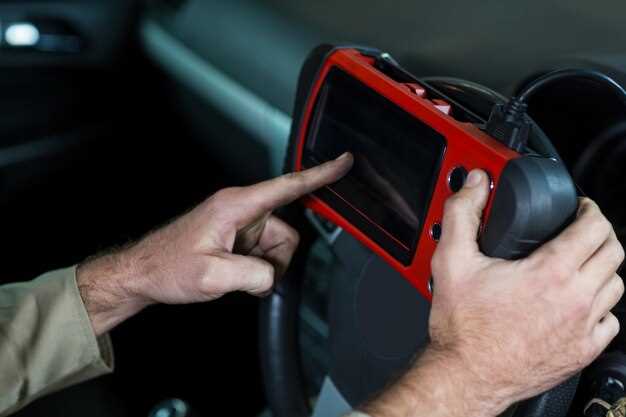
Understanding the intricacies of a vehicle’s performance and health has become increasingly manageable with the introduction of On-Board Diagnostics II (OBD2) systems. These advanced systems utilize standardized codes to convey information regarding various operational aspects of a vehicle. The ability to read and interpret these OBD2 codes is essential for both amateur and professional mechanics, providing invaluable insights into potential issues that may affect vehicle performance.
As vehicles grow more complex, equipped with a multitude of sensors and electronic control units, the diagnostics provided by OBD2 codes serve as a vital tool in identifying problems efficiently. Each code is a specific alphanumeric sequence that corresponds to particular components or systems in the vehicle. This not only facilitates accurate diagnosis but also empowers vehicle owners to understand the underlying issues that may arise and seek appropriate solutions.
In this article, we will delve into the fundamental aspects of reading and interpreting OBD2 codes. From the basics of how the system works to detailed explanations of the codes themselves, we aim to equip readers with the knowledge necessary to diagnose their vehicles effectively. By the end of this guide, you will have a clearer understanding of how to navigate through OBD2 codes, enabling you to make informed decisions regarding your vehicle’s maintenance and repair.
How to Connect an OBD2 Scanner and Retrieve Codes

Connecting an OBD2 scanner to your vehicle is a straightforward process that can help diagnose issues by reading trouble codes stored in the vehicle’s computer. To begin, ensure your vehicle is turned off to avoid electrical issues during the connection.
First, locate the OBD2 port in your vehicle. This port is typically found under the dashboard on the driver’s side, near the steering column. In some vehicles, it may be hidden behind a cover or panel, so you may need to look carefully.
Once you’ve located the OBD2 port, take your scanner and insert its connector into the port. It should fit snugly; if it doesn’t, check to ensure you’re inserting it the right way, as OBD2 connectors only fit in one orientation.
Next, turn on the vehicle’s ignition without starting the engine. This allows the scanner to communicate with the vehicle’s onboard computer. Some scanners may require you to press a power button, while others might turn on automatically when connected.
After powering on the scanner, follow the prompts on the device’s screen. Most scanners have a simple user interface allowing you to choose an option like “Read Codes” or “Scan”. Select the appropriate option to initiate the code retrieval process.
The scanner will communicate with the vehicle’s computer and display any stored trouble codes. These codes are typically in a format like PXXXX, where ‘P’ denotes a powertrain code. Make a note of these codes for further analysis.
If your scanner has the capability, you can retrieve both current and pending codes. Current codes indicate ongoing issues, while pending codes may suggest problems that have occurred but are not currently active. Review the scanner’s manual to understand the different codes and their meanings.
Once you have retrieved the codes, research them using the scanner’s built-in database, an online resource, or a repair manual to diagnose the issue. After addressing the problem, you can clear the codes from the system using your scanner, which often enhances the vehicle’s performance and resets the check engine light.
Finally, remember to disconnect the scanner from the OBD2 port and store it properly for future use. Regular checks can help maintain vehicle health and prevent more costly repairs down the line.
Understanding Common OBD2 Code Categories and Their Meanings
OBD2 codes are standardized diagnostic trouble codes that help identify issues within a vehicle’s electronic systems. These codes fall into several categories, each indicating a different aspect of vehicle performance or fault. The four primary categories of OBD2 codes are P-codes, B-codes, C-codes, and U-codes.
P-codes, or Powertrain codes, are the most common and relate to the engine and transmission systems. They typically begin with the letter “P” followed by a four-digit number. For example, a code like P0301 indicates a misfire in cylinder 1. These codes provide critical insights into engine performance issues, emissions problems, or transmission malfunctions.
B-codes, or Body codes, deal with issues related to vehicle body systems such as airbags, seatbelts, and power windows. These codes start with the letter “B” and can be essential for safety-related diagnostics. For instance, a B0010 code may indicate a problem with the airbag system, which is vital for occupant safety.
C-codes, or Chassis codes, focus on the vehicle’s chassis systems, including the suspension, braking, and steering systems. Starting with the letter “C,” these codes help diagnose issues that affect vehicle handling and safety. A typical C-code, such as C0035, may signal a concern with the anti-lock braking system (ABS), requiring immediate attention to ensure safe vehicle operation.
Finally, U-codes are reserved for Network and Vehicle Integration issues. They can indicate problems with communication between various vehicle modules, such as erroneous signals or lost information. U-codes begin with the letter “U,” and an example like U0101 suggests a communication failure between the engine control module and the transmission control module.
Understanding these categories is essential for effective vehicle diagnosis. By recognizing the nature of the OBD2 codes and their specific meanings, technicians can quickly pinpoint malfunctioning components and improve the efficiency of automotive repairs.
Steps to Troubleshoot and Resolve Issues Based on OBD2 Codes

The first step in troubleshooting vehicle issues using OBD2 codes is to retrieve the codes from the OBD2 system. This can be done using an OBD2 scanner, which can be obtained from automotive supply stores or online. Connect the scanner to the vehicle’s OBD2 port, usually located beneath the dashboard, and turn on the ignition without starting the engine.
Once the codes are displayed on the scanner, note them down and refer to the scanner’s manual or an online database to interpret their meanings. Each code corresponds to a specific issue within the vehicle, such as engine misfires, emissions failures, or sensor malfunctions.
Next, prioritize the codes based on their severity and relevance to the symptoms being experienced. Often, one code may lead to multiple related issues, so addressing the most critical errors first is essential for efficient troubleshooting.
After identifying the relevant codes, begin a visual inspection of the vehicle’s components related to the codes. Check for damaged wires, loose connections, or any visible signs of wear in the affected areas. This step can often reveal simple issues that can be fixed without further diagnostics.
If the problem is not evident, perform further diagnostics. This may involve using a multimeter or oscilloscopes to test sensors and electrical systems for proper operation. Additionally, consult the vehicle’s service manual for specific diagnostic procedures related to the codes retrieved.
Once the root cause of the issue is determined, it’s time to implement the necessary repairs. This might involve replacing faulty sensors, repairing wiring, or addressing other mechanical problems. Ensure that all repairs comply with manufacturer specifications for optimal performance.
After completing the repairs, clear the OBD2 codes using the scanner and perform a test drive to ensure the repairs have resolved the issue. Monitor any warning lights on the dashboard and watch for the reoccurrence of symptoms. If the codes return, further investigation may be necessary, possibly indicating a more complex problem that needs professional attention.
Finally, keep a record of the codes retrieved, the steps taken, and any repairs made. This documentation can be valuable for future reference or if further diagnostics by a professional technician become necessary.





